Leaf Browning In Vegetable Plants: What Is Causing Brown Leaves On Vegetables?
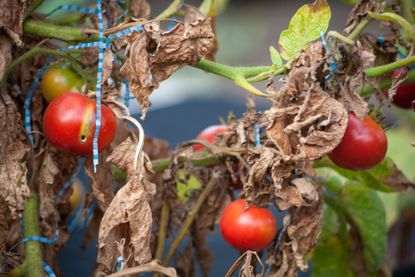
If you're noticing brown spotted leaves on veggies in the garden or complete leaf browning in your vegetable plants, don't panic. There are a number of reasons why you may see leaf browning in vegetable plants: inadequate water, too much water, overzealous fertilization, soil contamination, disease, or insect infestation. Let's learn more about leaves turning brown on vegetable plants.
What is Causing Brown Leaves on Vegetables?
The symptom is obvious; now we need to diagnose what's causing those brown leaves on your vegetables. If the entire garden has turned brown and died back, it's highly unlikely the issue is disease since pathogens generally attack specific plants or families and not an entire garden.
Irrigation Causing Leaf Browning in Vegetable Plants
Too much or too little irrigation may very well be at the root of the issue and is the simplest place to start with the easiest fix. All plants need water to grow, but too much of a good thing prevents oxygen from reaching the roots, resulting in vegetables with brown leaves and ending in death. Improve the drainage of the soil by amending with organic matter and reduce your watering if the soil seems waterlogged. Also, water early in the day at the base of the plant, not the foliage, to deter any fungal diseases, which will surely turn to brown spotted leaves on veggies. Similarly, inefficient watering or lack thereof, equals the same result: rapid wilting followed by the leaves turning brown on the vegetable plants due to their inability to photosynthesize.
Fertilizer
The appearance of vegetables with brown leaves may also be due to over-fertilizing, which will affect the roots and stems. A buildup of salt in the soil prevents the plants from absorbing either water or nutrients and will eventually kill the plant.
Contaminated Soil
Another culprit may be soil that is contaminated, often by petroleum-based products like gas or fuel runoff, salt runoff from the road, or other chemicals. Herbicide use may cause scorched leaves, turning brown around the leaf border and at the tip. You may need to have the soil tested to determine if this is a potential cause of vegetables with brown leaves.
Insects
There are some cases where the entire garden is afflicted with insect infestation, although more like only certain plants are attacked. Spider mites are common pests which are found on the underside of the leaves. The resulting damage is brown, scorched leaves that are dry and brittle to the touch. Root maggots, as the name suggests, feast on root systems of a variety of veggies such as:
The adult root maggot is a fly that lays its eggs at the base of the plant where the larvae subsequently hatch and munch away on the roots. If you suspect insects may be at the root of your problem, the local agricultural office, master gardener's association, or nursery may be able to assist with identification and a means of eradication.
Gardening tips, videos, info and more delivered right to your inbox!
Sign up for the Gardening Know How newsletter today and receive a free download of our DIY eBook "Bring Your Garden Indoors: 13 DIY Projects For Fall And Winter".
Disease
Finally, leaf browning in vegetable plants may be caused by a disease, usually fungal in nature such as Alternari solani or early blight. Early blight develops when temps range between 75 and 85 degrees F. (14-29 C.) and appears as concentric bull's eye blotching on foliage, which then turns yellow. Leaf spot diseases also cause brown spots on leaves and eventually necrotize the entire plant. Fungicide application is the best remedy for leaf spot diseases.

Amy Grant has been gardening for 30 years and writing for 15. A professional chef and caterer, Amy's area of expertise is culinary gardening.
-
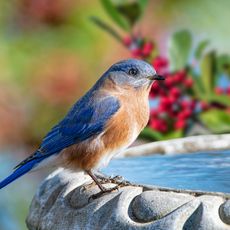 Gifts For Bird Lovers, Birders and Birdies To Attract More Feathered Friends To Your Yard!
Gifts For Bird Lovers, Birders and Birdies To Attract More Feathered Friends To Your Yard!If you’re looking to bring more birdies to your garden, these gifts for bird lovers should definitely be on your wish list. Grab some avian attractions to get your gardens all aflutter
By Janey Goulding
-
 Elegant Exotics: 8 Beautiful Amaryllis Varieties That Will Brighten Any Holiday Display
Elegant Exotics: 8 Beautiful Amaryllis Varieties That Will Brighten Any Holiday DisplayWhether red, pink, white or variegated, the right amaryllis varieties can enhance any living space, especially during the holidays. We round up eight of the most exquisite
By Bonnie L. Grant
-
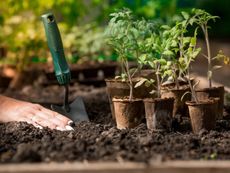 How Many Vegetables To Plant Per Person For A Year
How Many Vegetables To Plant Per Person For A YearGauging how much to plant in a vegetable garden can eliminate waste while still producing enough for your family. Click for more.
By Bonnie L. Grant
-
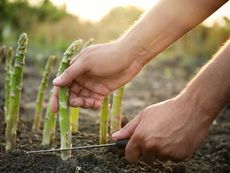 13 Perennial Fruits And Vegetables You Only Have To Plant Once
13 Perennial Fruits And Vegetables You Only Have To Plant OnceLooking to set it and forget it? Find out which fruits and vegetables can be grown as perennials.
By Laura Miller
-
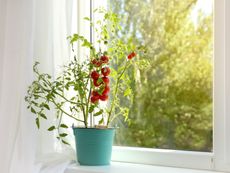 11 Edible Plants For A Year-Round Garden In A Bucket
11 Edible Plants For A Year-Round Garden In A BucketWant to know how to grow food inside your house and which foods do best indoors? Click here to learn all about it.
By Bonnie L. Grant
-
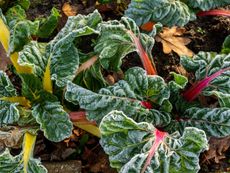 Frost Tolerance Of Vegetables From Least To Most Hardy
Frost Tolerance Of Vegetables From Least To Most HardyHow cold can vegetables tolerate? Knowing which veggies will survive frosts and freezes is essential for the success of your garden. Click here for more.
By Laura Miller
-
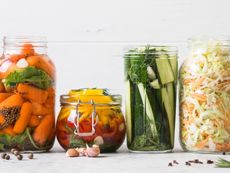 Best Vegetables To Pickle Straight From The Garden
Best Vegetables To Pickle Straight From The GardenPickles aren’t limited to just cucumbers. Read on for tips on pickling your fresh veggies.
By Amy Grant
-
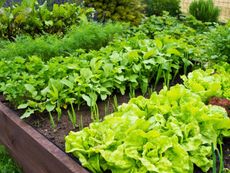 Benefits Of Planting In Fall Vs. Spring Vegetable Plots
Benefits Of Planting In Fall Vs. Spring Vegetable PlotsLearn why some vegetables do better if you plant them in fall instead of spring.
By Laura Miller
-
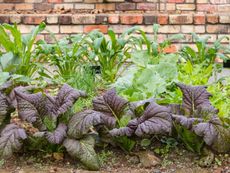 Interplanting Vegetables In The Fall Garden
Interplanting Vegetables In The Fall GardenLearn all about the benefits of interplanting vegetables for your fall garden.
By Laura Miller
-
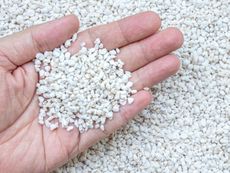 Best Vegetables For Growing In Perlite
Best Vegetables For Growing In PerlitePerlite is a natural growing medium that comes from super-heated volcanic glass. In some cases, it works better than soil. Read on for more info.
By Laura Miller